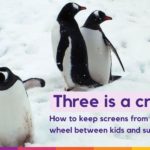You know that feeling you get when you look up from your phone and think, “Well that was a waste of time – how did I even get here?!” That’s what we tend to think about falling into a rabbit hole. But recall Alice (of wonderland fame) who spawned this idiom, and you’ll be reminded that the right type of rabbit hole can lead to a wonderfully transformative experience.
Using Screen Time to Help Kids Explore and Discover New Interests
Our education system has a naughty habit of implying that off-curricular learning for kids is to be poo-pooed. There’s so much emphasis on kids mastering certain skills by certain times that everyone is incentivized to keep them on a straight and narrow learning path. Indeed, educators and parents who take an expansive view on what counts as learning raise concerned eyebrows. But we’re forgetting what great discoveries and joys have come from people falling into rabbit holes throughout our human history.
Summer is a temporary reprieve from some of that weight of kids staying on curriculum. It’s a perfect time to give your kids a chance to get lost in topics and activities that they would never otherwise have looked at. We’re saying some rabbit holes are good! Have you heard the story of the boy who became a master at crocheting at age 6 by watching a youtube video? He’s doing more for the world at age 11 than most of our world leaders can dream off. So the operative word is ‘some’ rabbit holes are good. Others just suck.
Definition of A Good Rabbit Hole
First, let’s drop the analogy and be tactical. By rabbit hole here, we mean a journey of exploration through digital resources that is self directed by the child based on their interests. The good rabbit hole helps them discover something and maybe even a new useful passion. The bad rabbit hole leads to them watching something inappropriate or totally wasting their time. We’ve found a pretty fool proof method of 2 simple steps to figure out which type of rabbit hole you’ve got.
-
The Digital Journey Through a Good Rabbit Hole Has Known Boundaries.
A website like roomrecess.com where there are 150 + educational games for kids is a place where you understand the boundaries. Even if your 2nd grader chooses to play a 5th grade math game, let them have their jam. Another example of a known boundary is a YouTube or YouTubeKids CHANNEL + a listening child (more on this in a sec). Operation Ouch Channel is a good example – there are 100s of videos on all sorts of topics but whether your child wants to watch ones about digestion or what snot is made of, that’s their path to pick. If you have a listening child – good on you. But if you have a more typical child, use the function on YouTubeKids to pick a particular channel or collections of channels that your child can watch and voila, technology has given you a listening child 🙂 PLEEEAAASSEEE don’t throw the baby out with the bath water and ban all of youtube or youtubekids. Without specific channel guidance, they are the worst kind of rabbit hole. With the simple limitation to channels + listening child, YouTube and YouTubeKids are probably the most valuable learning resources you can access for free. Nevertheless, there are literally 1000s of websites and kids apps where you can know the boundaries without any additional work.
-
The Digital Journey Through a Good Rabbit Hole Is Time Bound.
One of the hallmarks of a bad rabbit hole is spending way more time there after the point at which it is clear it is not helpful. Alas, even if we can’t do this well for ourselves, we can feel like we’re winning if we can at least do it for our kids. You know what time works for your family and for the child best so decide it and track it. It can be 15 minutes to 2 hours. The point is, have that time off ramp for the kid.
So go ahead, let you kids fall into rabbit holes this summer. In fact, be a good parent and push them into rabbit holes. But first, make sure you’ve made it a good rabbit hole. Use technology to help you! (Aneta was literally built to help make the whole of the internet a good rabbit hole for kids.)


